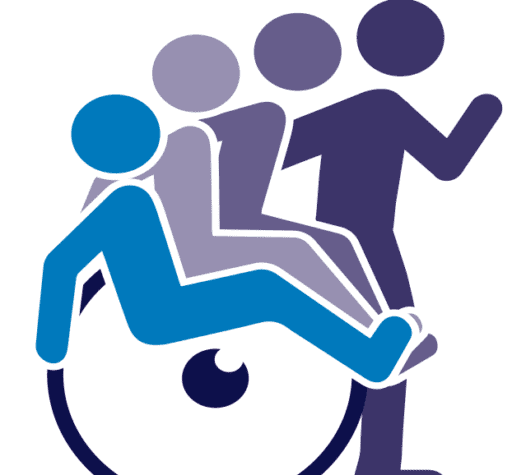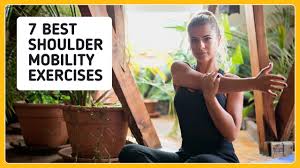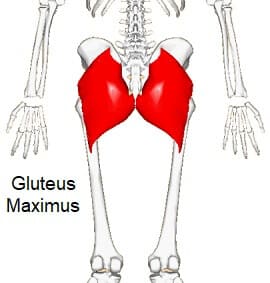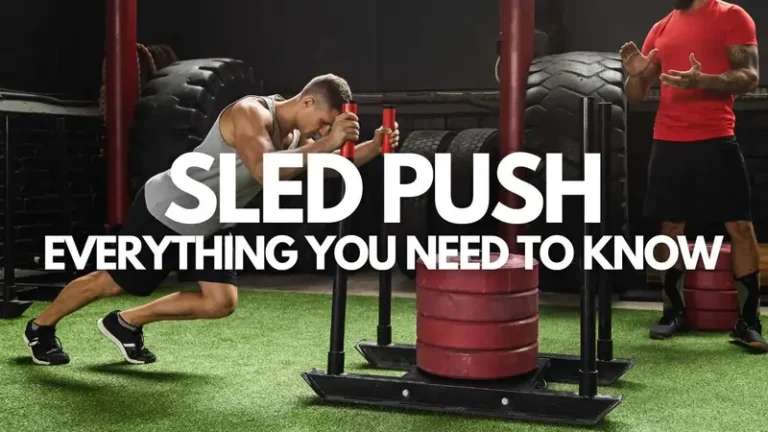Deadlift Exercise
The deadlift is a powerful compound strength training exercise that targets multiple muscle groups, including the glutes, hamstrings, lower back, and core. It involves lifting a loaded barbell or weight from the ground to hip level with proper form, making it one of the most effective movements for building total-body strength and stability.
Strong legs and a tight butt may be achieved with the deadlift. Although dumbbells can be used for the deadlift, a stationary barbell or a bar and plates are more common. To increase muscular mass and functional fitness, incorporate deadlifts into your strength training program.
Table of Contents
What Is Deadlift Exercise?
- The deadlift is a well-known compound exercise that requires bending at the hips and waist before standing straight to lift a weight from the ground.
- You must bend over while keeping your spine neutral and braced, gripping the weight, and using your feet to drive through the floor in order to perform the deadlift exercise and its variations. Your quadriceps, hamstrings, and glutes are used to raise the barbell off the ground during this exercise.
- In order to make the first level change required to grip the bar, the standard deadlift entails bending your knees and extending at the hips. When you start a typical deadlift, your torso angle will be between 30 and 45 degrees above horizontal.
- You must maintain a tight core throughout the movement to stabilize your spine and prevent your body from twisting, rounding, or arching.
- For every deadlift exercise, start by placing the weight about at the center of your foot, then bend forward to raise the object.
- Deadlifts are an excellent method to improve functional strength since they target your strongest lower body muscles.
- A crucial skill for daily tasks, they also prepare you for the functional activity of securely lifting items off the ground.
Muscles Used While Performing Deadlift
- Posterior Deltoid
- Rhomboids
- Erector Spinae
- Trapezius
- Rotator Cuff
- Latissimus Dorsi
- Glutes
- Hamstring
- Quads
- Lats
- Traps
- Lower Back
- Core and Other Muscles
How To Do Deadlift
A lightweight barbell or two dumbbells are your options.
- Position your toes beneath the bar, with your feet set at shoulder width or a bit wider. The heels should remain level on the ground. The bar will pass near the shins during lift and drop, perhaps causing a graze. Retain a neutral posture for your spine.
- Use your abdominal muscles.
- Lower the weight as much as you can while maintaining proper form, keeping a slight bend in your knees, and a flat back.
- Push yourself up from your knees with your legs to raise the bar. Exhale when you exert yourself. Take care not to lift the hips first, as this will cause the trunk to advance and the back to round out.
- Avoid using your arms to raise the bar. As the legs push forward, the arms remain stretched under stress while holding onto the bar. Imagine the hips, which serve as the balance point, going up in tandem with the legs and shoulders.
- Reaching maximum height, the bar rests about the thighs and nearly touches the shins.
- Repeat as many times as you want.
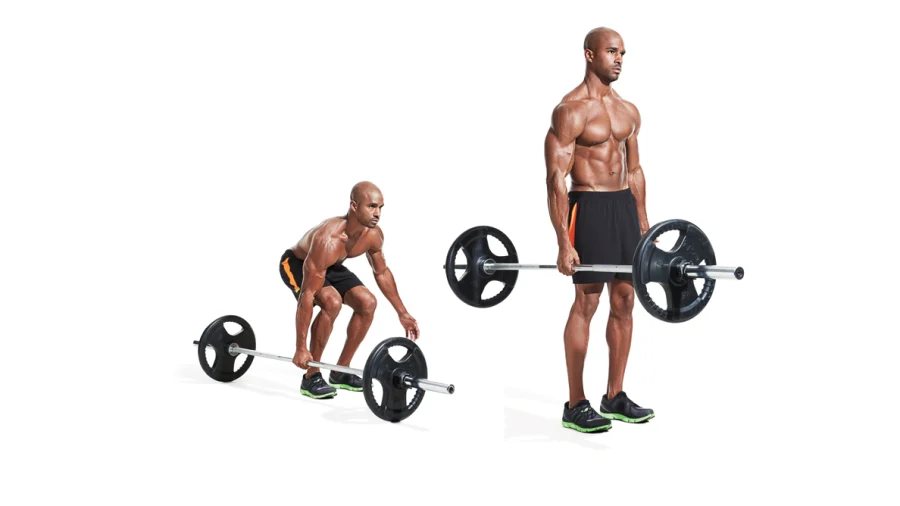
Variation In Performing Deadlift
You may target different advantages with different forms of the deadlift, which is far from a single workout.
Additionally, it could be advantageous to switch up the deadlift variation after completing a certain variety for 4–8 weeks in order to sustain improvement over the long run.
Here are several variants on the deadlift that you might wish to try.
- Sumo deadlift
- Single-leg deadlift
- Romanian deadlift
- Stiff-legged deadlift
- Deficit deadlift
- Hex bar deadlift
Sumo deadlift:
- You need to take a much wider stance and turn your feet outward by at least 45 degrees while performing the Sumo deadlift variation. Some athletes may have more leverage as a result of the inner thigh muscles being more activated.
- Specifically, studies indicate that Sumo deadlifts boost the ability of athletes with longer torsos to lift greater weight overall.
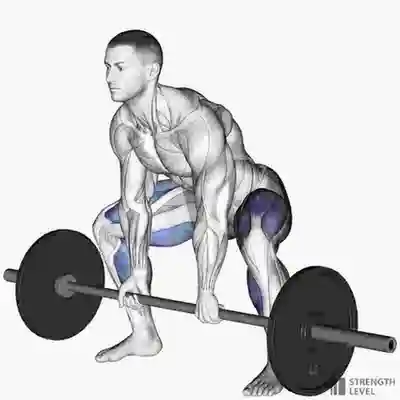
Single-leg deadlift:
- The single-leg deadlift uses the same action as the normal deadlift. The distinction is that as your foot leaves the floor and reaches behind you, one leg remains straight at the hip while you lean forward.
- The single-leg deadlift engages the core muscles more intensely to avoid inward or outward rotation and to keep the torso aligned.
- Because they don’t allow for as much weight to be lifted, single-leg deadlifts are typically employed as warm-ups or rehabilitation exercises. According to a study, single-leg deadlifts as a warm-up may lower indicators of muscle injury after a training session.

Romanian deadlift:
- Unlike a standard deadlift, which involves a more forceful bend, Romanian deadlifts need you to tilt forward at your waist while maintaining a modest bend in your knees.
- As a result, you will focus more on your hamstrings and glutes and less on your quadriceps.
- The gluteus maximus was shown to be similarly activated during the Romanian deadlift and the barbell hip thrust, which is a glute-specific exercise, according to research that used electrical measures of muscle activation.
- Compared to the Romanian deadlift or the barbell hip thrust, the gluteus maximus was much less stimulated by a back squat, which has a pattern that’s closer to the classic deadlift.
- Given this, a fantastic approach to include more gluteus maximus training is with the Romanian deadlift.
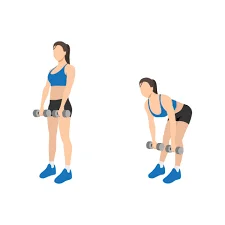
Stiff-legged deadlift:
- You should do the stiff-legged deadlift with your knees almost locked straight. You hinge at your waist to do the complete rising and lowering actions.
- Compared to other deadlift variations, research indicates that the stiff-legged deadlift significantly puts more strain on your hamstring muscles.

Deficit deadlift:
- When executing the deficit deadlift, you stand on a platform that is somewhat higher than the barbell’s resting position, usually 4 to 8 inches (10 to 20 cm) high.
- The same muscles are used in this variant as in the deadlift, but because the barbell is positioned lower in relation to your shins, you have more range of motion.
- Deficit deadlifts have been shown to enhance the balance of strength between your quadriceps and hamstrings, which may lower your risk of hamstring injuries.
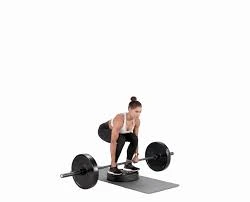
Hex bar deadlift:
- To perform the hex bar deadlift using a suitcase-style grip, position the bar so that its handles are presented forward, similar to the direction you are facing.
- The hex bar deadlift makes it possible to place your hands more naturally and align the weight’s direction with the rest of your body.
- Hex bar deadlifts, according to studies, enable the lifting of a larger total weight, which may lead to higher strength and power development because of the increased resistance.
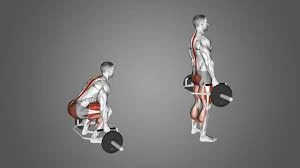
Deadlift Exercise Video
Benefits Of Performing Deadlift
- Activate your hip extensors
- Reduce lower back pain
- Improve jump performance
- Improve bone mineral density
- Activate your core
- Boost your metabolism
- Carry less risk during failed repetitions
- Offer simplicity of equipment
- Builds Muscle Mass
- Boosts Metabolism
- Builds Functional Fitness
Activate your hip extensors:
- A deadlift is one of the best exercises for strengthening your hip extensors. Your hip extensor muscles comprise the gluteus maximus and hamstring complex, which are frequently worked in fitness regimens because of their practical application and, with the right training, their visual attractiveness.
- Studies indicate that deadlifts are a better workout for these muscles than squats. Nevertheless, squats are a crucial part of well-rounded fitness routines and provide distinct advantages over deadlifts.
- Strength and size will grow as a result of the gluteus maximus and hamstrings being activated during deadlifts.
Reduce lower back pain:
While there are several reasons for lower back pain, each of which has a different course of therapy, research indicates that deadlifts may be a useful tool for treating or perhaps curing minor mechanical low back pain.
- Be aware that to prevent deadlifts from making your pain worse, you must perform them properly with a braced, neutral spine. A healthcare provider should be consulted before trying deadlifts due to lower back pain.
Improve jump performance:
- Many sports and leisure activities require the capacity to leap, and your ability to jump often reflects the development of your lower-body power.
- Additionally, jumping ability reflects enhanced power that translates to other maximum power sports, such as running.
- Deadlifts are one of the best strength-training exercises for increasing maximum jump performance, according to research.
Improve bone mineral density:
- A typical result of aging and a serious health concern for older persons is the loss of bone mineral density.
- The risk of fractures in the elderly is greatly increased by osteoporosis, a severe reduction in bone mineral density. A chain reaction of persistent physical health issues involving diminished mobility can result from fractures.
- Fortunately, a substantial amount of evidence backs up the idea that resistance exercise can prevent or even cure the aging-related loss of bone mineral density. Exercises like the deadlift are part of this.
- Increasing bone mineral density involves weight-bearing workouts that provide external resistance to the entire body
- There is a strong connection between the area of the body being exercised and the site of increasing bone density. In particular, the most enhanced bone mineral density will occur in the muscles used to carry out the specified movement.
- Doing deadlifts in combination with other resistance exercises can help prevent or treat age-related loss of bone mineral density since it works your hips and legs.
Activate your core:
- A vital component of general fitness routines is strengthening your trunk and core muscles.
- Although your core may be trained with a variety of exercises, studies have shown that deadlifts and other free-weight exercises are a good method to build and provide stability to your spine.
Boost your metabolism:
- Weight reduction is a normal target for exercise programs. In order to lose weight, especially body fat, you must burn more calories than you take in over a specific time period.
- In standard weight reduction regimens, calorie intake is decreased by dietary changes, while calorie burning is increased through physical activity.
- According to studies on activities that increase metabolism, resistance training with exercises like the deadlift may be one of the best strategies to boost calorie burn while spending less time in the gym overall.
- Furthermore, you will be able to burn more calories at rest during the day due to the muscle gain you will eventually experience.
Carry less risk during failed repetitions:
- Scientific study supports the previously mentioned advantages. However, there are a few subjective advantages to deadlifts that make them a useful workout in real life.
- You can raise a lot of weight without placing it on top of you, for instance, by performing deadlifts. If a repeat fails, you may often lower the weight without running the risk of suffering a serious injury.
- The bench press and the barbell back squat are two more efficient training techniques. In general, though, you can’t risk going as heavy without a spotter because a failed repetition could harm you.
- A safe method to include more intense training in your routine, if you usually work out alone, is with deadlifts.
Offer simplicity of equipment:
- The greater ease of use of the apparatus is the last subjective advantage of deadlifts. The activity can be performed with a barbell and plates or with a weighted device that has a handle, such as a kettlebell.
- Unlike other exercises that require specific equipment or access to a power rack, deadlifts are a popular workout with several benefits.
Builds Muscle Mass: Bodybuilders and others looking to stop or reverse aging-related muscle loss find that deadlifts are a great way to gain muscle mass. You may improve your general strength, core strength, and stability by performing deadlifts.
Boosts Metabolism: The number of calories you burn when at rest is determined by your metabolism. Your metabolism increases with lean muscle. You can assist in increasing your metabolism by gaining more lean muscle mass. Because they target some of the largest muscle groups in the body, deadlifts are a good way to increase the proportion of lean muscle in your body.
Develops Functional Fitness: The deadlift is a functional workout since it’s one of the greatest ways to mimic the lifting you do in your daily life. You will be able to lift and carry objects in daily life with less danger if you learn how to deadlift properly.
Common Mistakes While Performing Deadlift
- Rounding Your Back or Shoulders
- Lifting With Your Arms or Back
- Using Too Much Weight
- Partial Lifts
- Bar Too Far From Body
- Your Hips Rise Too Quickly
Safety And Precautions
- When done correctly and by healthy people, deadlifts and their variants are very safe exercises.
- The largest risk arises when you lift the weight by rounding your back instead of maintaining a neutral spine, especially if your spine moves actively while supporting the weight.
- This can cause both acute and long-term problems since it puts tremendous strain on your spine’s discs.
- Trying to lift more weight than you’re capable of doing frequently results in a compromised spinal posture. Another reason for spine movement during deadlifts is the avoidance of proper technique.
- Trying to lift more weight than you’re capable of doing frequently results in a compromised spinal posture. Another reason for spine movement during deadlifts is ignorance of proper technique.
- In order to minimize rounding and stabilize your spine under load, take a deep breath to activate your abs and core before lifting the weight.
- Before starting deadlifts, you should speak with a physical therapist or other qualified practitioner if you have a history of significant back pain or spine or disc injuries.
Summary
- A fundamental strength-training exercise, deadlifts provide several advantages for a variety of fitness and health objectives.
- In addition, different deadlift variations highlight different muscle areas and provide greater diversity to your training regimen than normal deadlifts.
- As long as you maintain appropriate technique and don’t raise the load above your present capabilities, most people can safely execute deadlifts.
- Incorporating deadlifts and their variants into your training regimen is essential if you want to optimize your strength-training gains.
FAQ’s
Actually, no matter their level of fitness, everybody can deadlift. The most crucial thing to keep in mind when advancing with the deadlift safely is form and variety. Kettlebell and dumbbell deadlifts are excellent choices for novices aiming for the barbell.
Hiring a coach is also worthwhile if you want to master form and technique correctly.
Yes! Despite using your legs as well, the deadlift is essentially a back workout. Your whole posterior chain will be worked when you pick up a weight off the floor by bending down at the hips. This is especially true for the muscles that surround your spine, including the erector spinae (lower back), latissimus dorsi (lats), and scapular muscles, including the rhomboids and trapezius.
There are several advantages to the deadlift. The deadlift is an excellent way to develop muscle and strength across your entire body, to start. Furthermore, mastering the deadlift develops longevity in daily life and carries over into sports.
The warm-up should be a little time-conscious. You don’t have to warm up for thirty minutes.
Pay particular attention to the joints and muscle groups that are most required for the deadlift.
Give your whole attention to the regions that require the most activation in order to meet your needs.
References:
- Rogers, P. (2024a, June 4). Deadlifts: proper form, variations, and common mistakes. Verywell Fit. https://www.verywellfit.com/how-to-do-the-deadlift-3498608
- Cpt, T. R. B. (2023, July 13). 8 Benefits of deadlifts you probably never knew about. Healthline. https://www.healthline.com/health/fitness/deadlift-benefits#bottom-line
- Cscs, J. B., & Cscs, J. B. (2025, May 27). How to Deadlift: Proper form, benefits, and variations. BarBend. https://barbend.com/deadlift
